Let’s be honest, when most people think of France, one of the first things that comes to mind is the incredible food—especially the gorgeous sweets that line the windows of the pâtisseries, beckoning passersby inside with their bright colors and opulent exteriors. While a trip to France may not be in the cards for you this year, you can bring a little Paris to your kitchen, by adding some regional French cookies to your baking rotation. Below are a list of seven traditional biscuits hailing from all over the food-famous hexagon. Each is accompanied with little tips that helped me along the way, to aid you in making the perfect French treats for friends and family this holiday season. Bon Appétit et bonne chance!
French Cookie Recipes to Try This Year
Croquettes de Vinsobres
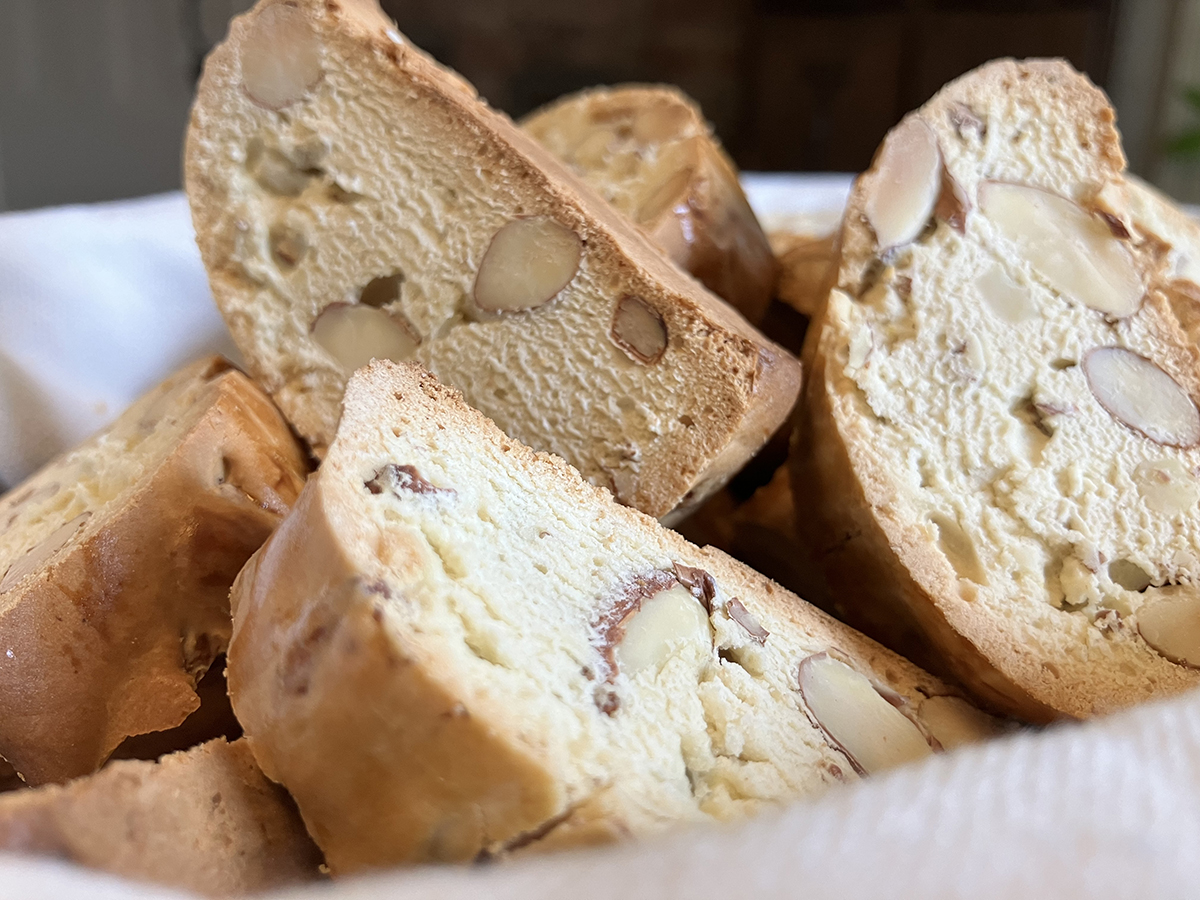
The Croquette de Vinsobres, also known as the Croquette de Chauvet, was first named after its creator Henri Chauvet, a baker from the tiny village of Vinsobres in the Drome department, before later being renamed for its hometown.
These little cookies are best described as a crunchy biscuit studded with almonds, most closely resembling an Italian biscotti. The biscuit is enhanced with the addition of orange blossom water, giving it a unique flavor that might surprise you when you take your first bite. It is one of the easiest cookies on this list to make, and the floral notes are just different enough to add some intrigue, making it an automatic addition to my French baking rotation.
Recipe here.
Baking tip: This dough is a bit sticky. The easiest way for me to shape the dough on the pan was to gloss my hands with a bit of olive oil. This helped make the beautiful “sausage,” shape that the recipe calls for.
Palets Breton
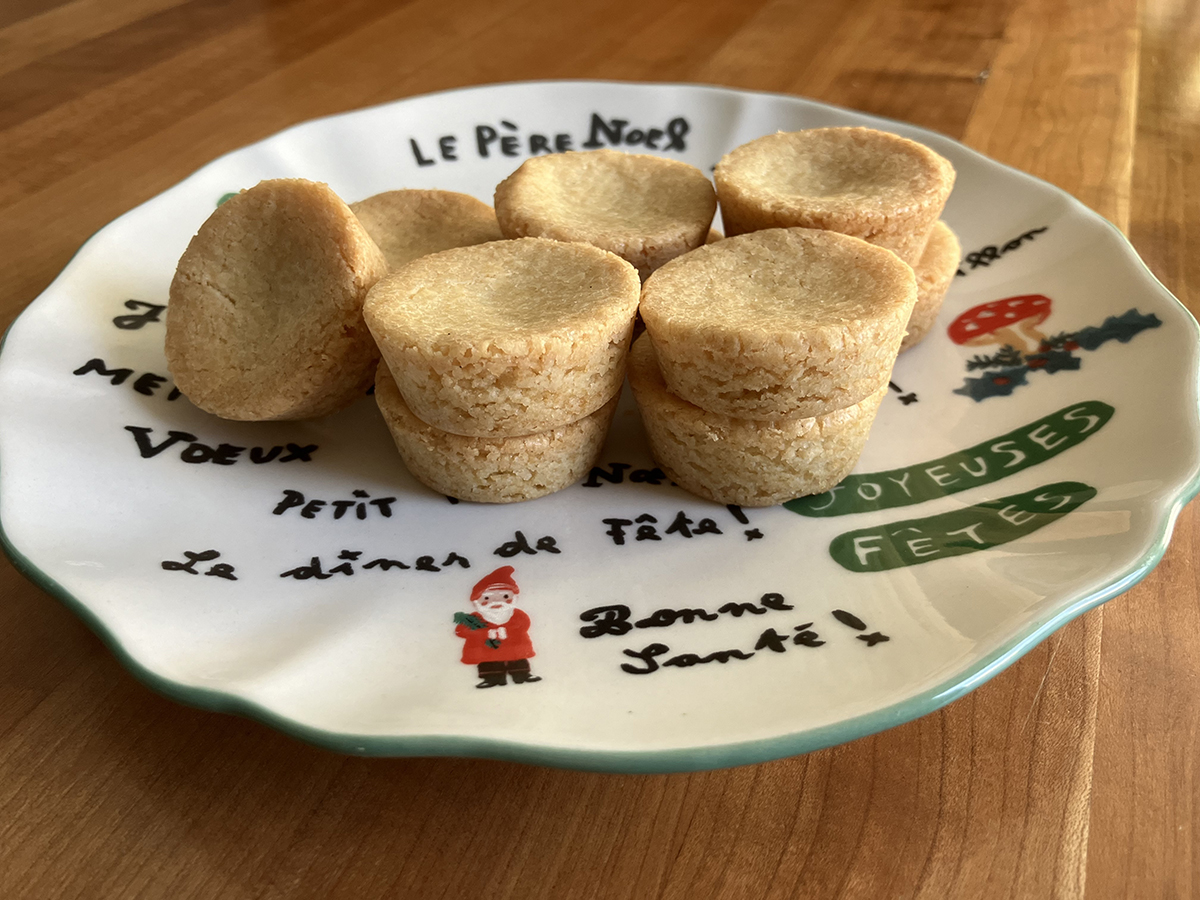
Palets Breton are French butter cookies coming from Bretagne, or Brittany. These cookies were created by Alexis Le Villain around the 1920s, and originally named Traou Mad, or “good things,” in the Breton language. It is said, however, that their more common name, Palets, came from their likeness to the metal quoits used when playing the game of shuffleboard. While these French butter cookies are simple, they are far from basic. That is because of their rich, delicious flavor, which comes from the special sea-salted butter found throughout the region. Don’t fret, though. You can achieve similar results by using cultured or European butter, both found in most stores throughout the U.S. It is slightly more expensive, but everyone who tries one can instantly taste the difference. Since this cookie doesn’t have many ingredients, the butter is the star of the show, so don’t think twice about splurging on it—you wouldn’t be sad if you do! For those wondering the difference is between American and European butter, you can check out our ultimate guide to French butter.
Recipe here.
Baking tip: This cookie does need a mold in order to get the shape and depth of the traditional version. I got my silicone mold on Amazon and it worked perfectly!
Be sure to let the cookie cool in the mold. If you try to pop them out immediately, they tend to lose their shape.
Bredele
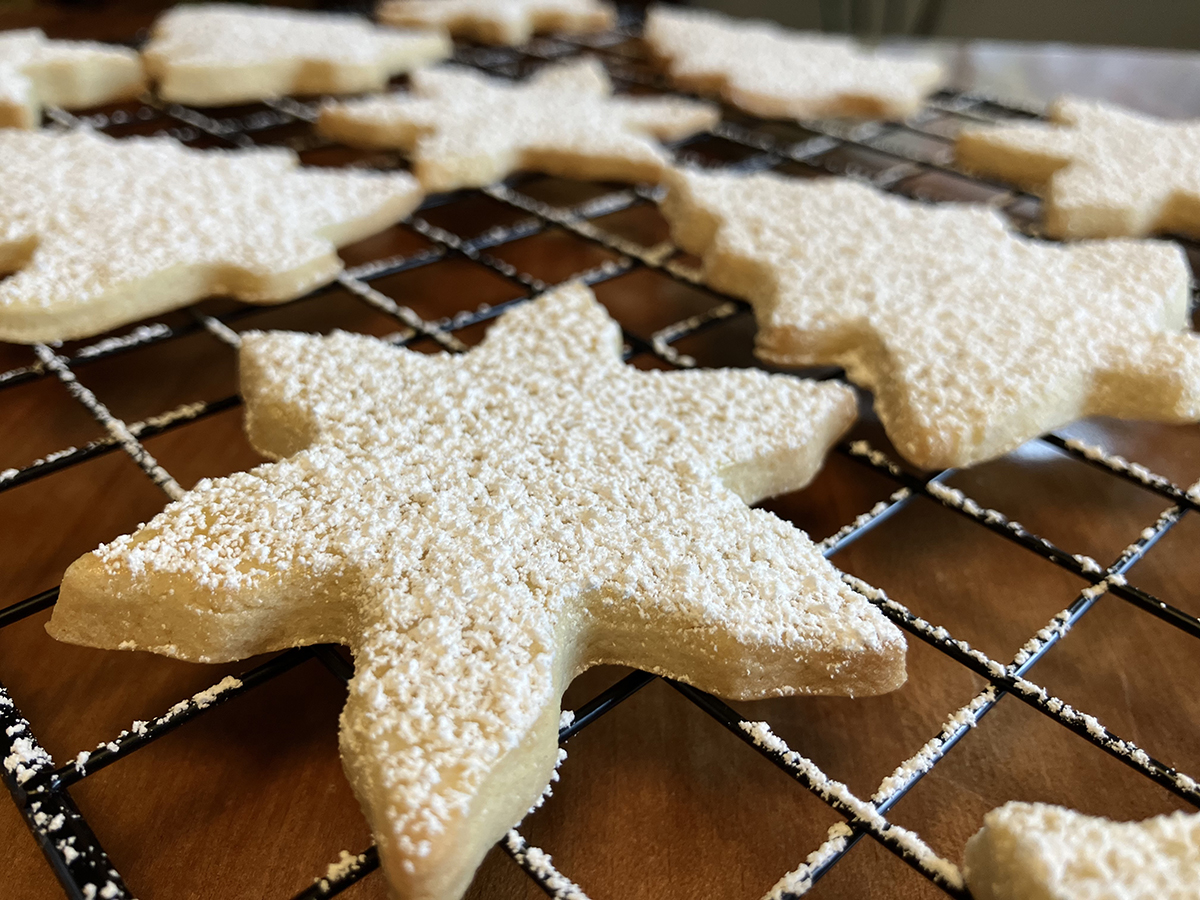
Depending on what part of Alsace you happen to be visiting, you may see these cookies spelled in a few different ways. Bredele is how you will see them spelled in the south, bredala in the north, or even bredle in and around the Strasbourg region. The cookie dates back to 14th century Strasbourg, but when looking more into these little cookies, I noticed that bredele preparation can vary just as much as its spelling! However, there are three primary methods. Molded bredele, or cookies made in little wooden molds, are considered the oldest of the three styles. Piped bredele cookies are shaped using spoons or piping bags. Finally, cut-out bredele use cookie cutters, an item that happened to be created in the Alsace region around the 15th century. There are also a handful of “classic” flavors of the cookie found in and around the region, ranging from anise (anisbredela); gingerbread (lapkueche); orange, cinnamon, and nut (schwowebredele); and a traditional shortbread, which was my selection.
Recipe here.
Baking tip: The cookies themselves are not terribly sweet, but once the powdered sugar is added they reach the expected sweetness of the perfect holiday cookie, so dust them depending on your preference of sweetness.
Lavender Lemon Sablé
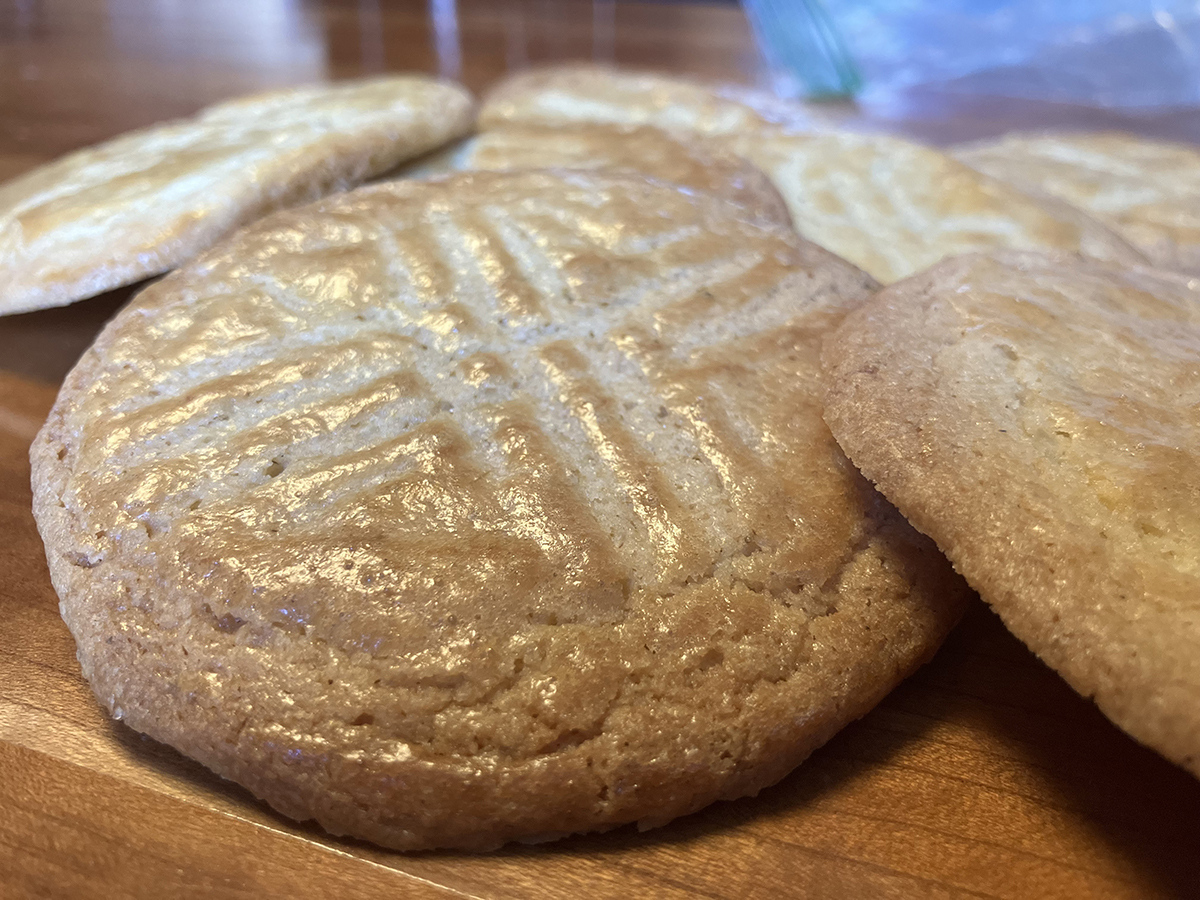
It is said that the Sablé Breton cookie was invented in the 17th century by the cook of Prince Condé. The prince was attending a party and brought along some of the shortbread cookies for the guests who were attending. In attendance that night was Madeleine de Souvre, Marquise de Sable, and it is said that Prince Condé’s chef named the biscuits in honor of the Marquise.
Another Breton favorite, featuring the region’s rich, creamy butter, I wanted to feature these French sablé cookies, but give them a little twist with fresh and floral flavors coming from Provence. I followed this recipe to create the most delicious biscuit base. Before adding the sugar to the eggs, however, I pulsed the sugar with the zest from one lemon and a tablespoon of dried lavender in a food processor. Once the three ingredients were well incorporated, I continued on with David’s original recipe, adding the mixture to the eggs.
Recipe here.
Baking tip: The amount of lemon and lavender I used gave the cookie a very subtle flavor. If you are looking to have the flavors be well defined, I would add the zest of two lemons and 1 ½ tablespoons of dried lavender to up the flavor profile.
Canistrelli
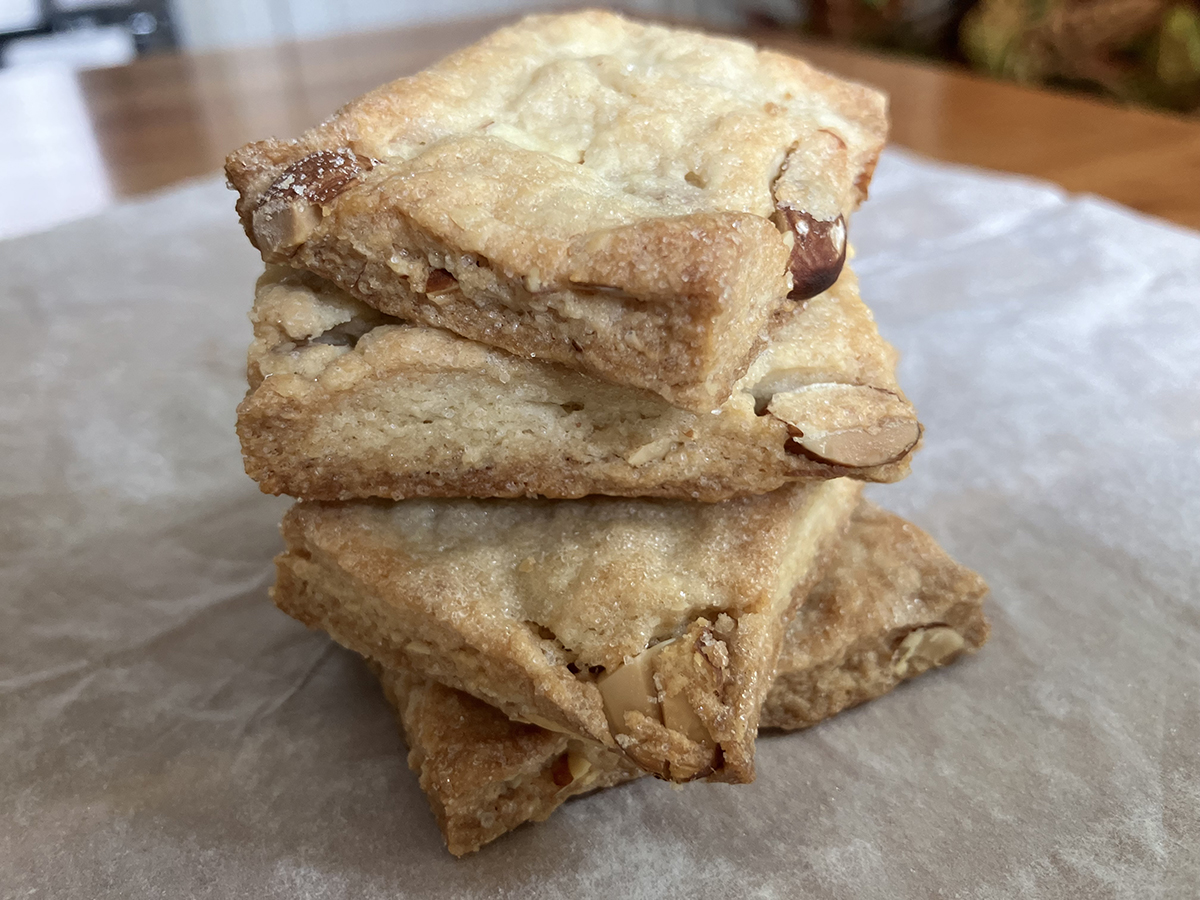
Whole wheat, chestnut, or almond flour are typically called for in the traditional recipes for canistrelli, hailing from the island of Corsica off the coast of France. As most home bakers only have white flour in their cupboards, I decided to go with a recipe that just called for that. After reading about other bakers’ experiences using either the chestnut or wheat flours, it seems as though the two gave the cookie a bit of an earthy flavor and grainy texture that most found a bit unappetizing. One recipe even likened the cookie to the flavor and texture of a dog biscuit.
Canistrelli were mostly eaten by Corsican shepherds who would pack them in their sacks as a hardy treat while trekking through the harsh shrublands of the island, making the biscuit more of a pick-me-up after the long hikes than a delicious treat. Some slight changes over time have yielded the more dessert-like biscuit popular today, making it a favorite on the island of Corsica and abroad.
The ingredients come together without any dairy, which also makes this cookie an absolute treat for lactose intolerant friends and family. While you will find different recipes with or without anise seed, to make it as close to traditional, without using the two flours, anise is a must.
Recipe here.
Baking tip: While If you don’t want to buy a whole bottle of pastis to only use ⅓ cup, you can substitute ⅓ cup of the white wine and two tablespoons of anise extract in addition to the ½ teaspoon of anise seeds, lightly crushed. It still had a very anise-y flavor and was a bit more cost effective.
Arlettes
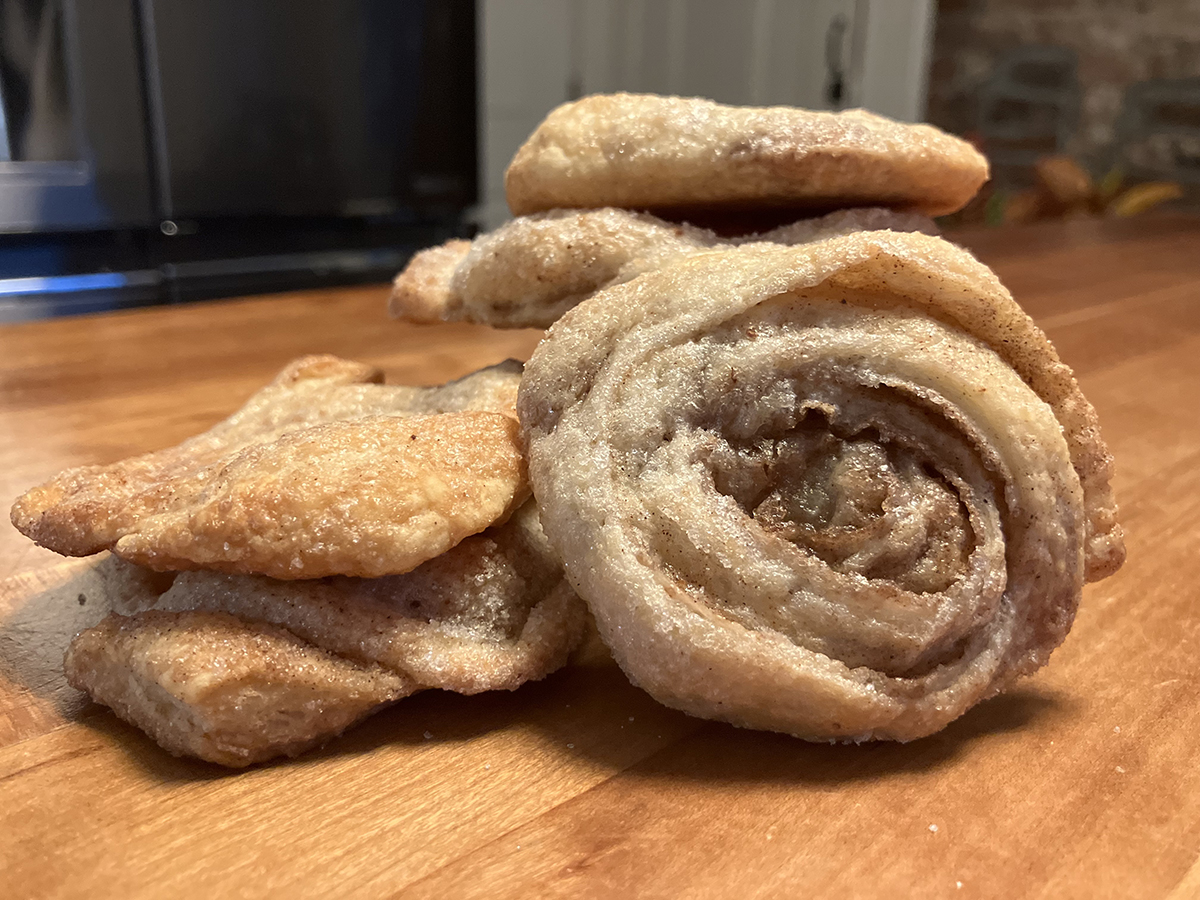
The arlette cookie is a distant cousin of the flaky palmier, also known as an elephant ear in the U.S. Both were created in the South of France around the turn of the 20th century, but arlettes were typically served with a dish of ice cream rather than accompanying a cup of tea or coffee. The arlette consists of a style of laminated dough known as pâté feuilletée inversée, or an inside-out puff pastry. Because this method is so labor intensive, many bakers believe the cookie went out of fashion not long after being created. But the arlette is only now being made famous again by legendary French pastry chef Dominique Ansel, who features the little treats in his pastry shop.
Recipe here.
Baking tip: As much as I love making things from scratch, puff pastry, especially inside-out puff pastry, is not on that list. The recipe above follows the same steps as the other recipes out there, but cuts the time in half by using premade puff pastry.
Croquantes de Sarlat

Croquant is French for crispy or crunchy, which describes the Croquantes de Sarlat to a T. A lot of croquant recipes, such as the Croquants de Cordes, call for almonds, while other recipes suggest using whatever nut you may have on hand. To me, that seems to be taking away from the key ingredient of the cookie, walnuts, which are produced in abundance in the Périgord region where these originated. Visit any store and you will see candies, breads, cakes, and even oil, all made of walnut. While you could use any nut you happen to have or prefer, for these particular cookies, I would stick with walnuts and celebrate one of the region’s most popular flavors.
Recipe here.
Baking tip: These are sticky even after coming out of the oven, so it is best to use a silicone mat for easy removal.

